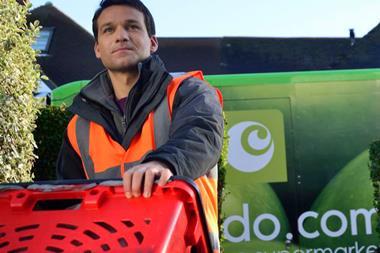There have been plenty of column inches dedicated to the John Lewis Partnership in recent weeks. Outgoing chairman Sharon White and partnership CEO Nish Kankiwala face, it would seem, a monumental task in restoring JLP to its former glory.
Last week, following a series of reports that executives plan to shed some 11,000 roles over the next five years, the pair sought to reassure the retailer’s 76,000 partners the sacrifice could be worth it.
Following an uptick in sales, progress on its plan to modernise stores and improve its jaded IT infrastructure, JLP appears on track to “more than break even” this year, White told partners in a video message seen by The Telegraph.
That optimism seems even more impressive given that just months ago, in September, White had conceded soaring inflation meant it would take two years longer then initially expected to return to “sustainable profits”, pushing back the final deadline for its turnaround strategy to 2028.
The news of job cuts – which Waitrose later confirmed would happen, though it didn’t specify a number – should be no shock. White had previously warned a further reduction in headcount was on the cards, following several waves of cuts across head office and in stores over recent years.
John Lewis Partnership redundancy
It’s no secret that JLP’s massive overheads remain a chain around its neck, stymieing further investment into its supply chain and outdated stores estate. Its hallowed partnership model, which despite often being hailed as an exemplar of employee ownership models, has slowed decision making, and made it difficult to bring in new forms of investment.
Given the media storm that followed leaked proposals considering diluting that model in order to bring in external funds, and the stuttering progress of controversial plans to grow it’s buy to let business, it’s no surprise senior partners are turning to a reduction in headcount as one way to unlock funds. That’s alongside the sale and lease back of Waitrose stores and new bank loans, which have brought in an additional £260m but increased debt.
Spreadsheet economics, even if there is some sense, will be no comfort to the thousands of loyal and hard-working partners who may have to leave the business. It’s also going to come at a cost.
Revelations that the business would halve the amount of redundancy pay offered to colleagues, which emerged shortly before the news of the job cut proposals, have been widely criticised. A piece in the weekend’s Telegraph, in which GMB union sources accuse JLP of discouraging partners from joining a union, is likely to draw similar uproar. However, preventing staff from joining unions has been denied by the partnership.
Realistic or not, the reports add to a growing sense that senior partners have lost control of the narrative, internally and externally.
Waitrose customer service ranks highly
There’s the adage that a reputation takes years to build and minutes to destroy. Any redundancies will leave a sour taste and will be remembered by customers if not handled sensitively by the employee-owned business.
Reputational costs aside, the planned reduction in headcount leaves another, perhaps bigger potential contradiction.
In a partnership-wide update delivered to staff in November, Kankiwala said a proposed strategy update would focus on creating a “one retail mindset”, doubling down on JLP’s high reputation for customer service.
Despite the financial and structural issues, Waitrose has continued to generally outperform its big four rivals for its service levels in The Grocer 33. Customer service along with its genuinely higher animal welfare credentials, gives it a key edge when it can’t compete on cost. Waitrose’s partners remain a key reason for that, as they do for John Lewis too.
Wield the axe too deep, or in the wrong areas, and there’s a very real chance it will weaken its strongest asset.

























No comments yet